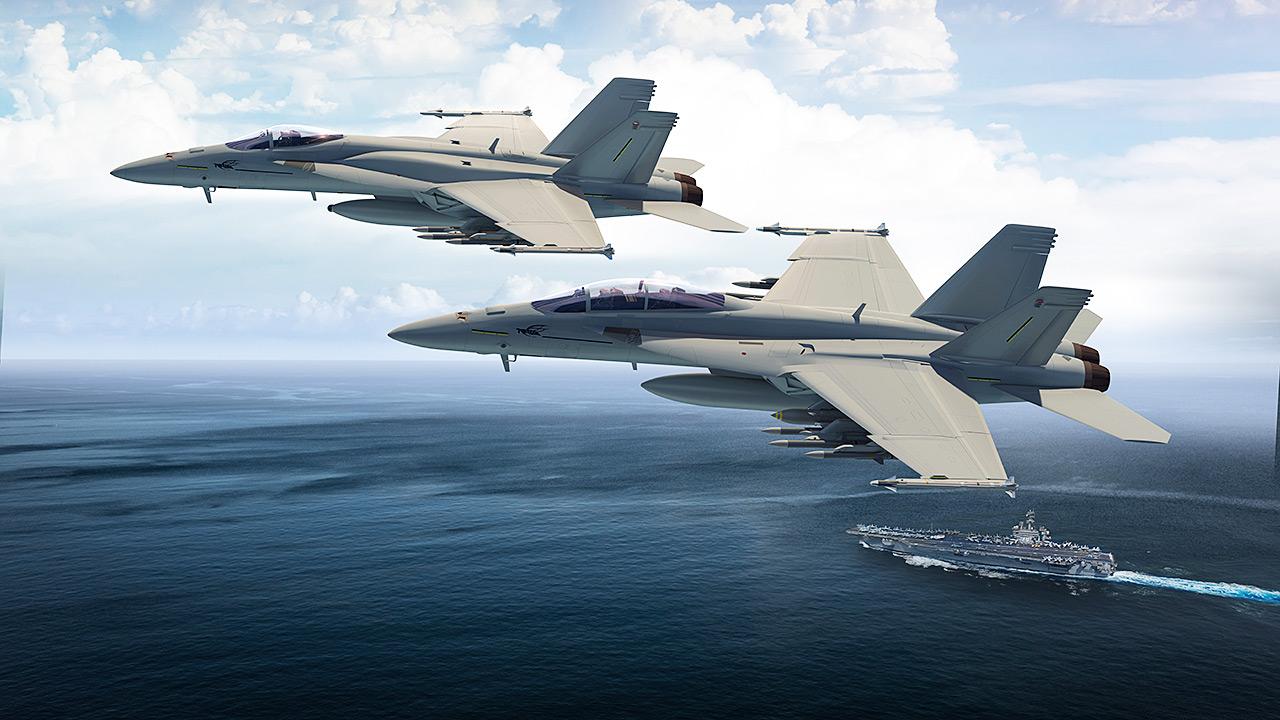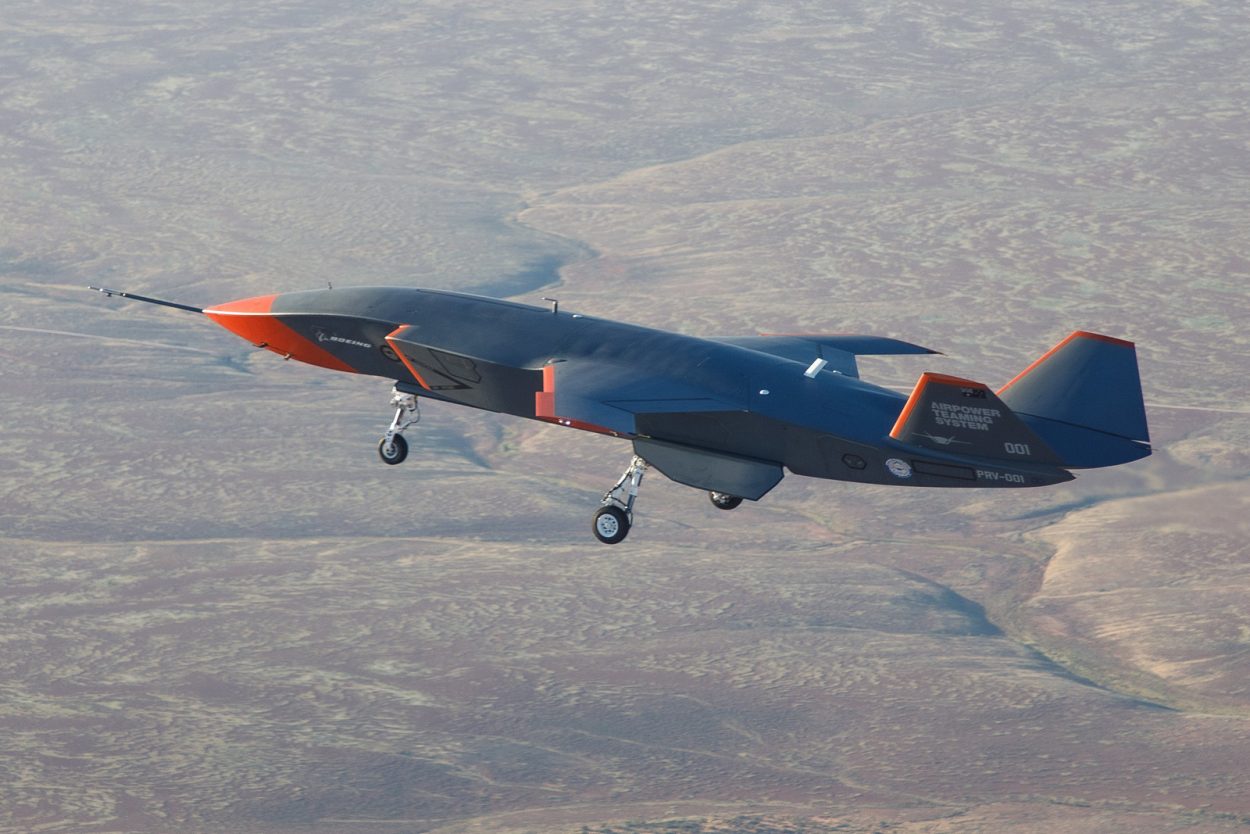In a significant leap towards achieving the ‘loyal wingman’ capability, Boeing claimed its F/A-18 Super Hornet Block III simultaneously controlled three drones in a series of test flights.
In the tests, Boeing system engineers connected the aircraft’s adjunct processor, known as the Distributed Targeting Processor–Networked (DTP-N), with a third-party tablet to link up with the UAVs, the release said.
Boeing developed new software loads for the DTP-N to run the third-party tablet and transmit commands. During the test flights, F/A-18 pilots entered commands into the tablet, which were processed and transmitted through Block III’s hardware.
The UAVs executed all orders given by F/A-18 pilots during tests over two weeks, a release from the company said. Last year, Boeing provided the US Navy with the first of the 78 contracted Block III F/A-18 Super Hornet fighter jets, the company said in a statement.
The US joins Russia to test the manned-unmanned teaming concept practically. The countries rapidly stare at the possibility of clashing in a real war over the next decade.
In December 2020, RIA Novosti said that Okhotnik conducted simulated tests with infrared (IR) and radar-seeker air-to-air missiles to test the UCAV’s fire-control systems at the 185th Combat Application and Training Centre at Ashuluk.

It also later reported a guided missile test on May 28, which Janes Defense claimed was likely to use a Kh-59MK2 standoff cruise missile. The 14 feet long missile with a satellite-guided range of 310 miles can also be fired from the Su-57.
It was later confirmed by a video of the test released by Russia’s Ministry of Defense (MoD).
China, meanwhile, was reported by Global Times to be considering the J-20A, the twin-seat variant of the J-20.
The chief editor of the Beijing-based Aerospace Knowledge magazine Wang Ya’nan said the second pilot could control the drones. It would include ground attack, air-to-air combat, and Electronic Warfare.
India, meanwhile, in early 2021, revealed it was working on the Combat Air Teaming System (CATS), with the first tests reported to begin by 2024.
Lastly, Lockheed Martin has revealed its vision of the Manned Unmanned Teaming (MUM-T)/Loyal Wingmen concept, where a presentation depicted various large and small drones, high-end and attritable, with different roles controlled by a single fighter and integrated into a more comprehensive network of air assets operating in a contested battlespace.
Still Far Away from Full-Fledged Use
The complex technology behind MUM-T is essentially hackable since it involves a continuous link between the manned fighter and the unmanned wingmen drones.
With missiles and radars regularly jammed, wingmen might be delinked from the controlling aircraft, given the Russian and Chinese militaries’ advanced Electronic Warfare (EW) capabilities.
While meant to undertake a series of tasks from decoys, EW, surveillance, air search, and kamikaze (suicide) missions to limited air-to-air combat, the primary goal remains to take the load off routine tasks from the manned fighter and allow it to undertake more complex missions.
By the time countries have operational MUM-T systems by the end of this decade, it will be interesting to see how they combat adversary fighter drones.
Air combat would be even more chaotic since drones would possibly shoot at other drones but without the complex and aggressive maneuvering of a manned fighter. The pilot/crew can’t control the drone like that. Also, Artificial Intelligence (AI) is not advanced enough to fly those aerobatics.

Wingmen drones would therefore be required to be first tested in mild combat scenarios to see how they stand against enemy radars, weapons delivery, and data linking with the manned fighter. Will all drones need to have some limited air-to-air capability?
Will wingmen need to be able to perform a little bit of each of the tasks, given the high level of attrition of such platforms that might occur in a war between Great Powers?
Planners have not clarified whether wingmen will share data with ground assets, especially in air-land battles. Will drones from a wingmen/fighter swarm also be controlled by ground troops, i.e., would their control be transferable? If yes, can they be retrievable?
The radical concept has come at a time when Great Powers are likely to clash shortly, where once used, wingmen drone’s evolution will also be rapid to maintain an edge over the adversary, unlike the unipolar era where the US’s pre-eminence as the sole superpower for 20 years left it woefully militarily unprepared before Russia and China.
- The author can be reached at satamp@gmail.com
- Follow EurAsian Times on Google News




